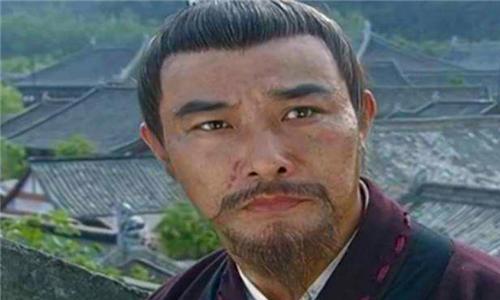"The beginning of tragedy is often also the beginning of glory." - "Those Things of the Ming Dynasty"
There is such a record in the "Sihong Hezhi" that the Yang family had a nest, and Zhu Chuyi often lay here when he was fine, and later, when Zhu Chuyi was lying in this place again, he met a Taoist monk, who said to him: "Buried here, the descendants can be born of the Son of Heaven." ”

At that time, the Zhu family was still nothing, it was a poor family of ordinary people, originally their family lived in Zhujia Lane, Tongde Township, Gurong County, Jiang Shusheng, but at the end of the Yuan Dynasty, they were disturbed, and the people in the official government did not treat the people as people, the Zhu family could not survive in Zhujia Lane, Zhu Chuyi fled with his whole family to Sunjiagang, 13 miles north of gusi Prefecture, which was also an isolated place.
Hearing this sentence from the Taoist, Zhu Chuyi's heart did not dare to think much about it, but where he was buried was to be buried, and burying here was not a big problem, so Zhu Chuyi said this to his son Zhu Wusi after he returned, and explained: "After I die, bury me there." ”
Another ten years, Zhu Wusi has already become a family, Zhu Chuyi is old, once he is ill, he did not get up again, Zhu Wusi did not forget the words his father said before he died, he buried Zhu Chuyi in that nest, half a year later, Zhu Wuyi's son Zhu Zhongba was born.
At that time, the life of the Zhu family was getting more and more unsatisfactory, and in 1244, a major drought took the lives of Zhu Wusi and his wife and eldest son Zhu Zhongwu, and his family died one after another, Zhu Yuanzhang was still young, and the family had money to bury their deceased relatives, not even a piece of land to bury their relatives.
Or the landlord Liu Jizu could not bear it, and gave Zhu Yuanzhang a cemetery, Zhu Yuanzhang buried his relatives with his second brother who was still alive, and then the two brothers ran to each other in the chaotic world, Zhu Yuanzhang first defected to the Gaobin monk of the Huangjue Temple, but then encountered famine, Zhu Yuanzhang had to leave the temple and live on the street.
At the end of qin thousands of years ago, Chen Sheng and Wu Guang unveiled the pole uprising and issued the slogan "The prince will have a kind of love", and at the end of the Yuan Dynasty thousands of years later, the oppressed people were overwhelmed by the suffering, and they also unveiled the pole uprising, and the soldiers of the rebel army were wrapped in red scarves and called the "Red Turban Army".
In 1352, Dingyuan's local tycoon Guo Zixing married the world hero Hao Jie and joined the rebel army, after the rebel army captured Haozhou, Zhu Yuanzhang's childhood friend wrote him a letter, asking him to join Guo Zixing's rebel army, Zhu Yuanzhang thought that the matter had reached this point, everywhere he went to live, he went to Guo Zixing, and renamed himself "Zhu Yuanzhang", meaning that he wanted to become a weapon to end the Yuan Dynasty.
In addition, Zhu Yuanzhang also renamed his father Zhu Wusi "Zhu Shizhen".
And the old Daoist priest at that time really told the right thing, Zhu Yuanzhang later opened up the Ming Dynasty and ascended the throne. Once the dynasty was emperor, Zhu Yuanzhang's identity has been extraordinary, above ten thousand people, so Zhu Yuanzhang also thought of relocating the tomb to the ancestors and burying another feng shui treasure land, but after Liu Bowen, who was knowledgeable and especially knew feng shui, looked at it, he thought that there was no second feng shui treasure land in the world compared with this.
Therefore, Zhu Yuanzhang only rebuilt the Ming Ancestral Mausoleum and the Ming Emperor's Mausoleum in the same place, the Ming Ancestral Mausoleum is the mausoleum of Zhu Yuanzhang's ancestors, and the Ming Emperor's Mausoleum is the mausoleum of Zhu Yuanzhang's parents. According to relevant historical documents, the Ming Ancestral Mausoleum was originally built with a temple, a golden gate, a jade bridge, a kitchen, a well pavilion, a slaughterhouse, a worship house, etc., and also planted 10,000 cypress trees, a total length of more than 250 meters, two pairs of pillars on both sides, 19 pairs of stone statues, and 149 acres of sacrificial fields.
Later, Zhu Yuanzhang died and was buried under Mount Everest in Dulongfu, at the southern foot of the Purple Mountain, and his grandson Zhu Yunjiao ascended the throne as emperor and became Emperor Jianwen, but political struggles soon occurred, Zhu Yunjiao was defeated and his whereabouts were unknown, and his uncle Zhu Di took the throne as the Yongle Emperor.
The Ming Ancestral Tombs were all built in 1413, but no one expected that 80 years later, the Yellow River flooded, seized Huaihuai into the sea, the river began to be disordered, the Ming Ancestral Tombs gradually sank to the bottom, and by the nineteenth year of the Qing Kangxi Dynasty, the Ming Ancestral Tombs and Sizhou City were completely engulfed by the flood.
Hundreds of years later, the end of the feudal dynasty, the end of World War II, the founding of New China, the vicissitudes of the sea, and then underwent earth-shaking changes, in 1963, Hongze Lake drought, rapid decline in water level, a large number of strange buildings at the bottom of the lake reappeared in the sky, attracted the attention of the local government and relevant experts, experts consulted the relevant historical books, after surveying the great joy: is the Ming Emperor Mausoleum.